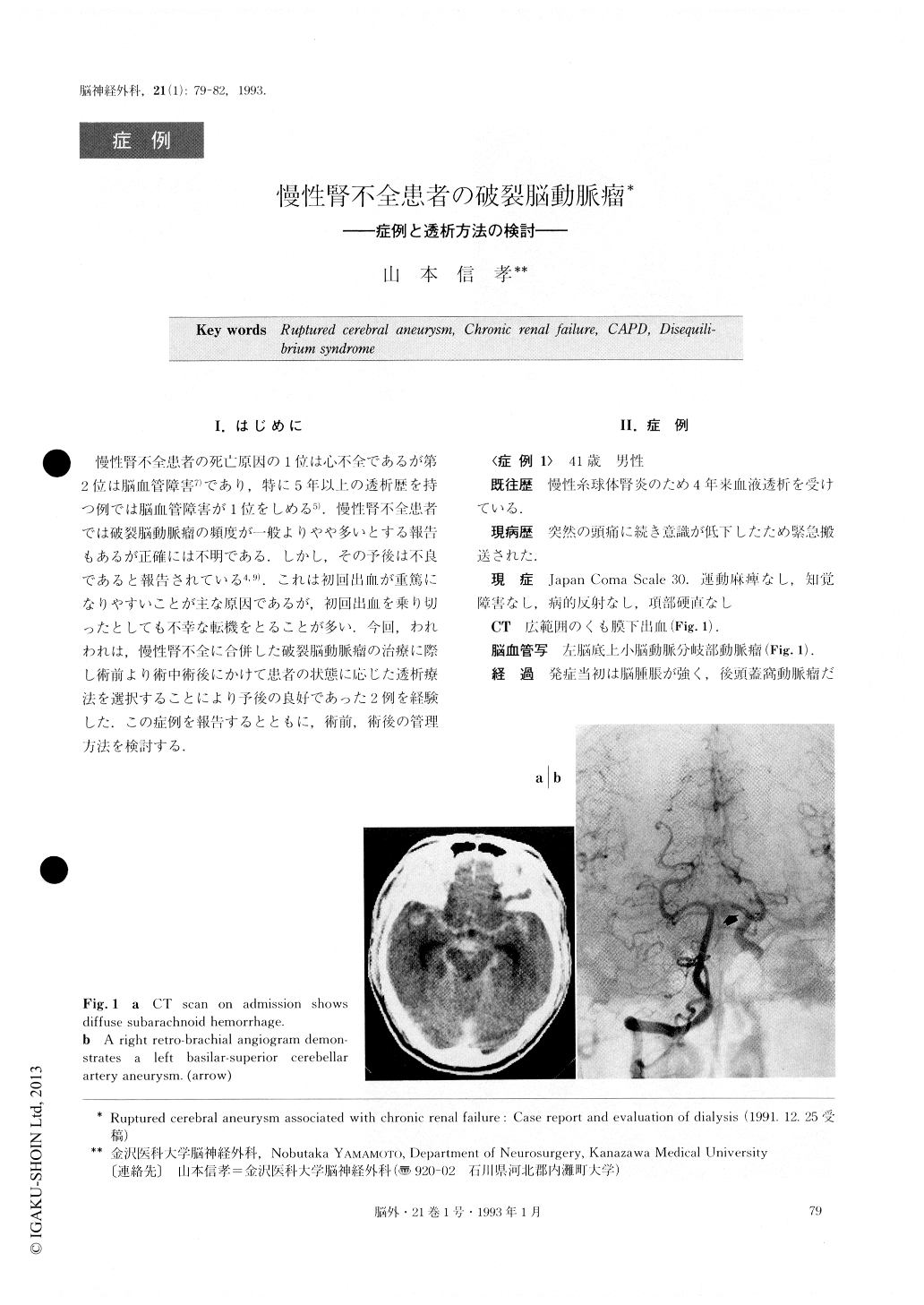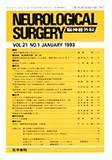Japanese
English
- 有料閲覧
- Abstract 文献概要
- 1ページ目 Look Inside
I.はじめに
慢性腎不全患者の死亡原因の1位は心不全であるが第2位は脳血管障害7)であり,特に5年以上の透析歴を持つ例では脳血管障害が1位をしめる5).慢性腎不全患者では破裂脳動脈瘤の頻度が一般よりやや多いとする報告もあるが正確には不明である.しかし,その予後は不良であると報告されている4,9).これは初回出血が重篤になりやすいことが主な原因であるが,初回出血を乗り切ったとしても不幸な転機をとることが多い.今回,われわれは,慢性腎不全に合併した破裂脳動脈瘤の治療に際し術前より術中術後にかけて患者の状態に応じた透析療法を選択することにより予後の良好であった2例を経験した.この症例を報告するとともに,術前,術後の管理方法を検討する.
Two cases of ruptured cerebral aneurysm with chro-nic renal failure were successfully treated by selecting an appropriate dialysis during the pre- and postopera-tive period. Case 1; a 41-year-old male, who had been receiving hemodialysis for 4 years, complained of sud-den onset of headache, and his consciousness deterio-rated abruptly afterwards. A ruptured basilar-left super-ior cerebellar artery aneurysm was diagnosed, and an external ventricular drainage device was installed. The patient slowly recovered consciousness and was sche-duled for delayed operation. During this period hemo-dialysis was suspended and continuous ambulatory peritoneal dialysis (CAPD) was performed instead. On the 24th day, the aneurysm was clipped, and CAPD switched to ordinary hemodialysis three days after the operation. However, consciousness deteriorated and CT scan showed diffuse cerebral swelling due to disequilib-rium syndrome. The patient recovered consciousness 24 hours after hemodialysis. Frequent short-term dialysis eventually eliminated this syndrome. Case 2; a 60-year-old male, who had been receiving hemodialysis for 6 years, complained of a sudden severe headache, and a ruptured anterior communicating artery aneurysm was diagnosed. Emergency clipping of the aneurysm was performed and, except for mild vasospasm on the se-venth day, the patient's recovery was uneventful post-operatively, with non-anticoagulative agent hemodialy-sis. These two cases demonstrate that chronic renal fai-lure of a ruptured cerebral aneurysm patient can, with good prognosis, be treated by CAPD preoperatively, and non-anticoagulative agent hemodialysis postoper-atively, followed by ordinary dialysis carefully avoiding the disequilibrium syndrome.

Copyright © 1993, Igaku-Shoin Ltd. All rights reserved.


